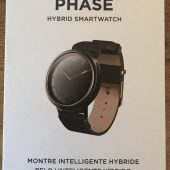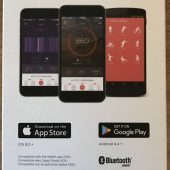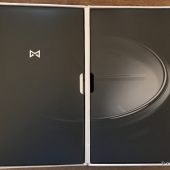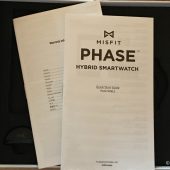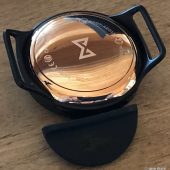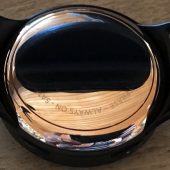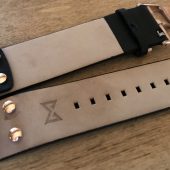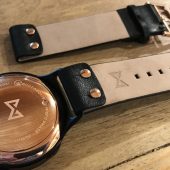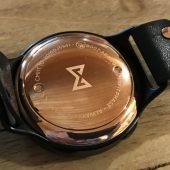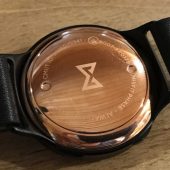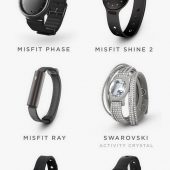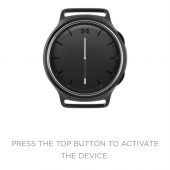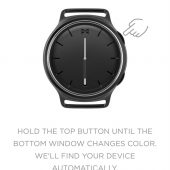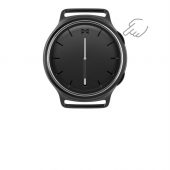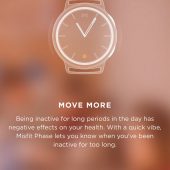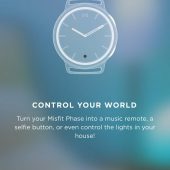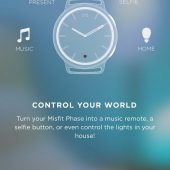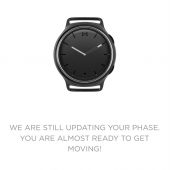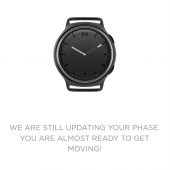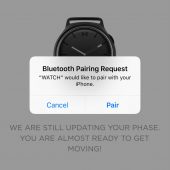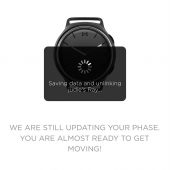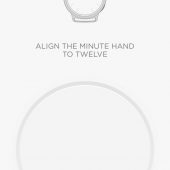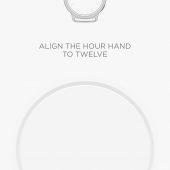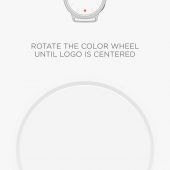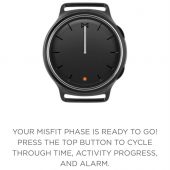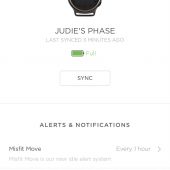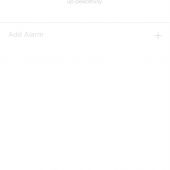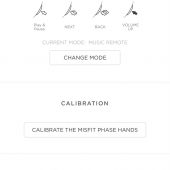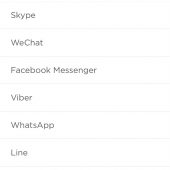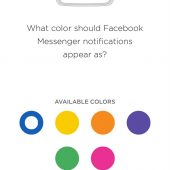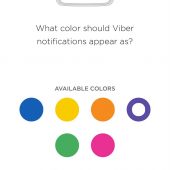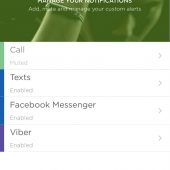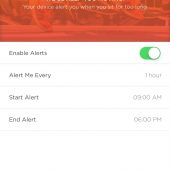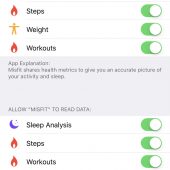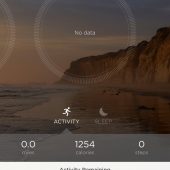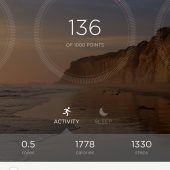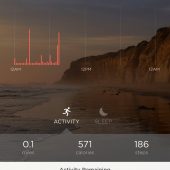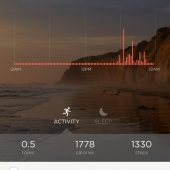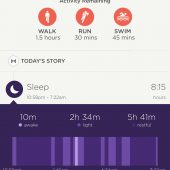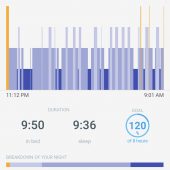“Hey, nice watch!”, I heard yet again today. That watch happens to be the Misfit Phase, a connected combination watch and fitness tracker that can count steps, distance, calories, and light as well as restful sleep. With the Misfit app on your iOS or Android device, you can easily keep track of how you are doing.
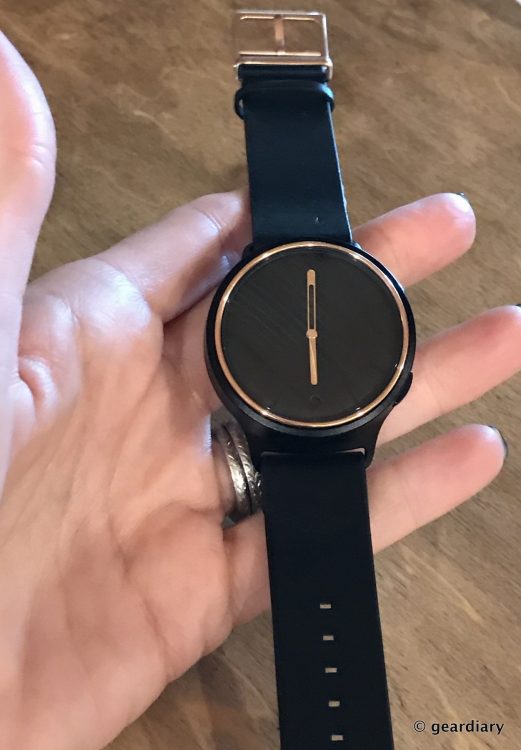
Available in enough color combinations to make any fashionista or dandy smile, the Misfit Phase can be purchased in navy and gray with a brown leather band, navy and gold with a navy sport strap, silver with a white sport strap, rose gold with a white leather strap, jet and rose gold with a black leather strap, and jet with rubber sport strap. I received the jet and rose gold version; it is an eye-catching combo that men and women have positively commented upon.
Included in the box are the Misfit Phase watch, two straps, a tool for removing the back of the watch (when it’s time to change the battery), warranty paperwork and a user guide.
The first thing you’ll need to do when you open your box is to attach the watch straps. my jet and rose gold watch came with a black leather band. Each strap has two gold studs that pop through slits cut in the leather to secure the band to the watch; to install the watch, you have to unfasten the studs, insert the band through the bars built into the lug ends, and then re-fasten the studs through the watch band.
The main thing that you’ll notice about the Misfit Phase is that it is a classically styled watch, but it is a bit thicker than most. It measures 41mm from side to side, and it is 14mm thick. Rather than flashing text on a screen, it relies on vibrations to notify you of calls, texts, alarms, and custom app notifications. The watch has a stainless steel and aluminum body which is water-resistant to 5 ATM; in other words, you can swim with it on, but if you use your watch for that, you’ll probably want to opt for the sport band rather than the leather band. The good news is that you can order extra bands and easily swap them out if you want to be able to wear the watch in dressier settings as well as when you are working out.

Assuming you’ve assembled your watch and straps, it’s time to pair the Misfit Phase to the Misfit app on your iOS or Android device. You’ll select the Phase from the other Misfit devices on the screen, and then you’ll follow the steps to pair and set it up.
Once you’ve paired your Misfit Phase to your phone, you can tell it which apps or events you’d like to receive vibration notifications for from a set of predetermined apps. You can also assign colors to show in the small circular window on the face of the watch, but in all honesty — if the light isn’t good, you aren’t going to be able to see the color of the indicator. I tend to never even check that, but I have notifications locked down to only alert me if calls, Viber messages, text messages, or Facebook alerts come in.
I generally keep my phone on silent at all times, so it is nice to have a vibration on my wrist alerting me when I might need to pay attention. Unfortunately, you can only choose notifications from a select group of apps, so if you want to be notified when your Lyft is arriving, for instance, that capability is not there.
You can also set the Misfit Phase to give you alerts when you’ve been sitting still for too long, and you can define the hours that you’d like those alerts to go off. I like that feature, as I tend to sit at my desk working for extended periods of time, and without a gentle reminder I can easily look up and realize that it’s been three hours since I stretched or moved around.
The Misfit Phase is also able to set multiple alarms to wake you, or to remind you when you need to take medicine (for example). Most of the fitness tracker watches I’ve reviewed can only set one alarm, so this is a cool feature. The watch will do its best to wake you peacefully (based on your sleep patterns, when you are sleeping), so the alarm time is a little more general and less exact.
Another trick that the Misfit Phase has is that the bottom button is a smart button; you can assign it to do various functions including taking photos, finding your phone, tracking your activity and sleep, and triggering Harmony Hub activity (to name a few).
I also like that the data compiled by the watch is shared with Apple Health.
The most important part of the app, of course, is the display that tells you how your daily progress is going. Misfit uses a slightly different system than other trackers; you earn points against 1000 during the day, and each point seems to translate to roughly 10 steps. So, for instance, in the example below I walked 1330 steps (or about 0.5 miles), which made 136 out of 1000 points. You’re given a base calorie setting for each day which is likely set depending on your height and weight, and then the calories you earn are added to it. I tend to ignore this number, as I don’t want to get it in my head that I can go crazy just because I did a bit of walking. 😛
You can also check your sleep for the previous night: you are given a breakdown of minutes that you are awake, lightly sleeping, or getting restful sleep. The watch is quite comfortable to wear, and I’ve never had an issue sleeping with it on my wrist.
The top button on the watch is used to display your progress; if you tap it once, the hands will join together and move to give you a visual representation on the face of the watch of where you are toward your 1000 point goal for the day. If they are at the 3 mark, you have hit 25%, the 6 mark, you’ve hit 50% and so on.
The true test for how well any watch tracks my sleep is putting it up against my dedicated sleep tracker, the Withings Aura. As you can see by the two screen shots below, the Aura noticed the minute I got to bed (at 11:12 pm), and it immediately started keeping track of me trying to fall asleep and then eventually doing so. The Misfit Phase took about 10 minutes longer to register that I was lying down to sleep, and it showed me as waking up one minute later than the Aura did. You can see similar bands for restful versus light sleep, so overall I’d say the Misfit Phase does a very respectable job of tracking sleep.
- Sleep reading using the Withings Aura
- Sleep reading using the Misfit Phase
There is no need to dock the watch for charging, as the battery inside will last for up to six months. When it is time to change it out, you can use the tool that was included in the box to remove the back and insert another.
The Misfit Phase is a great choice for anyone who wants a smartwatch that doesn’t look like a smartwatch; if you like a thicker, more statement-making watch, you’ll love its style. The Phase looks beautiful and it does an accurate job of tracking activity and types of sleep. If you want basic notifications on your wrist and a watch that you can wear when you swim, shower, and workout, you should take a look at the Misfit Phase.
The Misfit Phase Hybrid Smartwatch retails for $175, and it is available directly from the manufacturer and from other retailers including Amazon [affiliate link].
Source: Manufacturer supplied review sample
What I Like: Very nice looking classically style watch; Ability to set multiple alarms during the day and on specific days; Bottom button can be programmed to do various functions; Pressing top button displays your day’s fitness progress; You can buy sport bands as well as leather bands to dress the watch up or down
What Needs Improvement: Limited number of apps are able to send notifications to the watch; It’s a little bit thick

